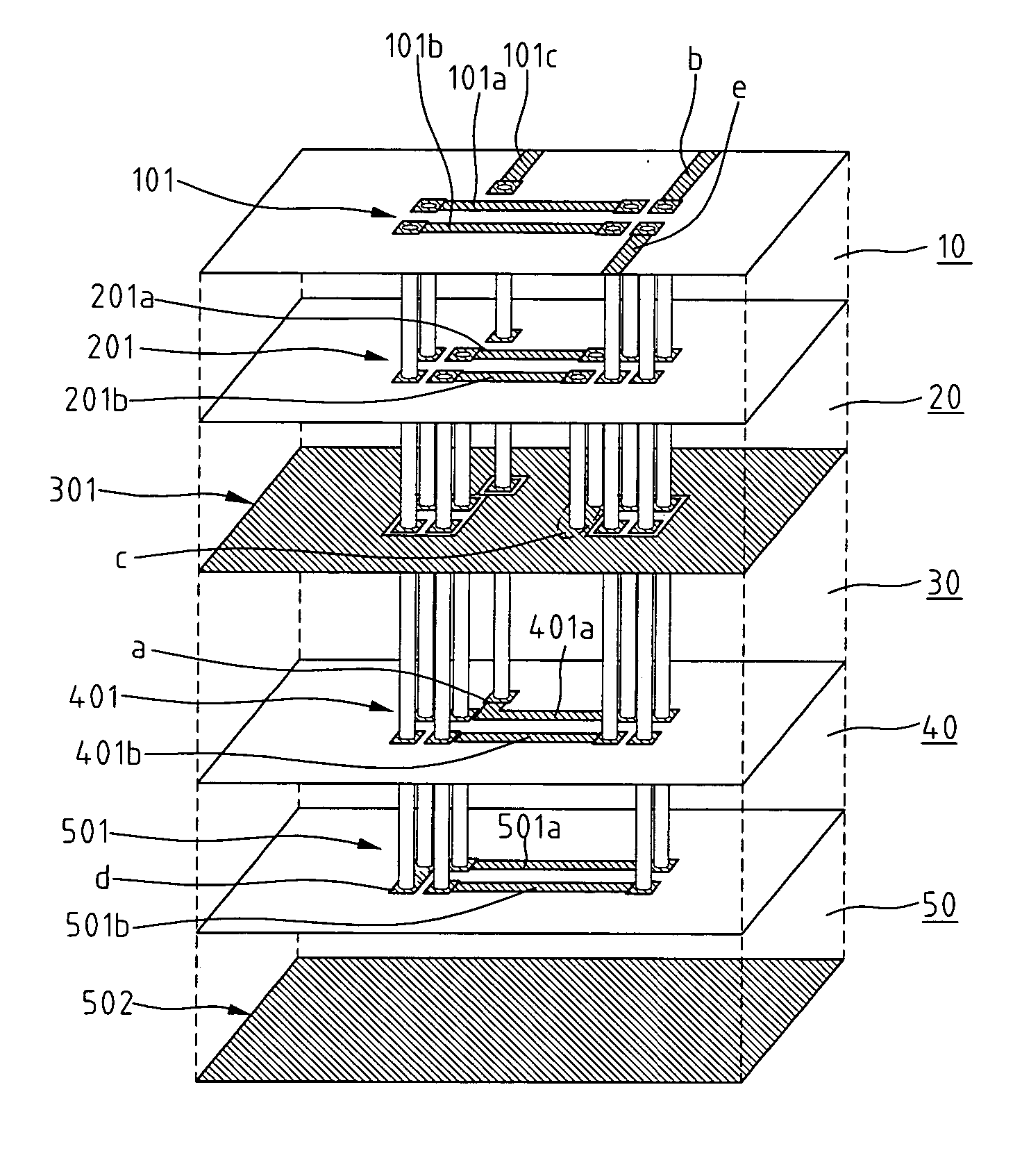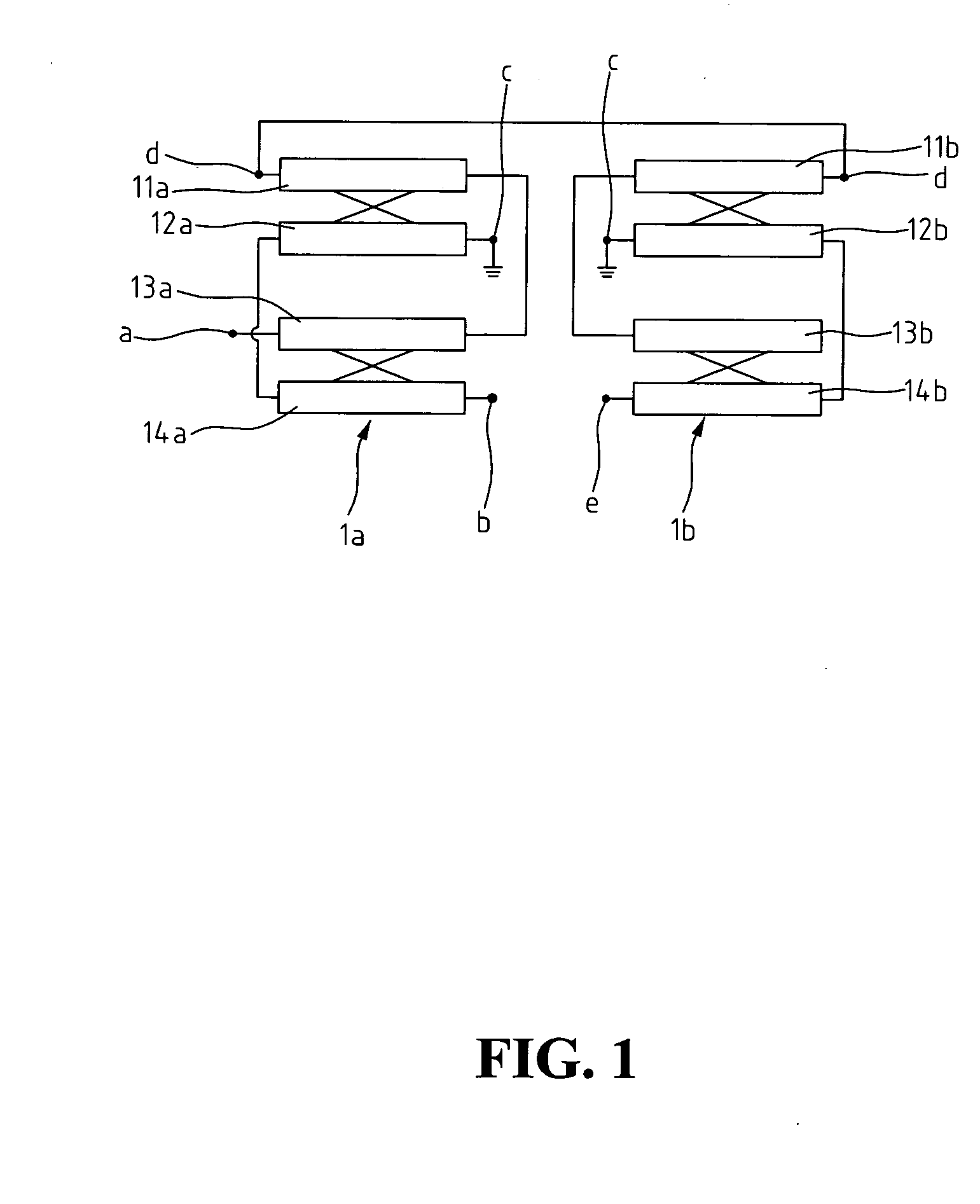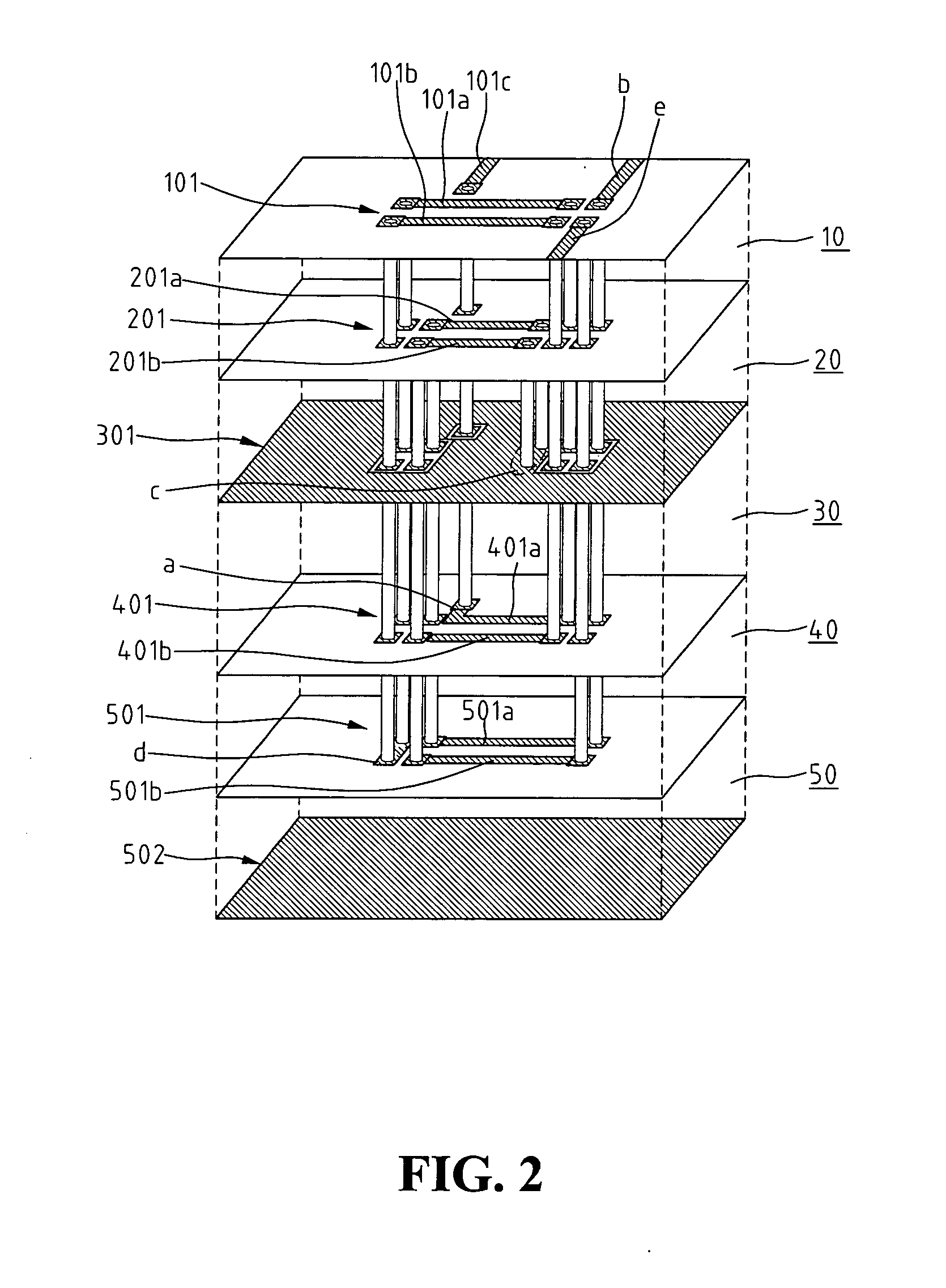Three-dimensional balun
- Summary
- Abstract
- Description
- Claims
- Application Information
AI Technical Summary
Benefits of technology
Problems solved by technology
Method used
Image
Examples
Embodiment Construction
[0020] The more important features of the invention have thus been outlined, rather broadly, so that the detailed description thereof that follows may be better understood, and in order that the present contribution to the art may be better appreciated.
[0021] Additional features of the invention will be described hereinafter, which will form the subject matter of the claims appended hereto.
[0022] Referring to FIG. 1, the three-dimensional balun is a multi-layer circuit structure, which corresponds to an equivalent circuit shown in FIG. 1 having two matching coupled lines: a first coupling component 1a and a second coupling component 1b. The first coupling component 1a includes multiple transmission lines: a transmission line 11a, a transmission line 12a, a transmission line 13a, and a transmission line 14a; and the second coupling component 1b includes multiple transmission lines: a transmission line 11b, a transmission line 12b, a transmission line 13b, and a transmission line 14...
PUM
 Login to View More
Login to View More Abstract
Description
Claims
Application Information
 Login to View More
Login to View More - R&D
- Intellectual Property
- Life Sciences
- Materials
- Tech Scout
- Unparalleled Data Quality
- Higher Quality Content
- 60% Fewer Hallucinations
Browse by: Latest US Patents, China's latest patents, Technical Efficacy Thesaurus, Application Domain, Technology Topic, Popular Technical Reports.
© 2025 PatSnap. All rights reserved.Legal|Privacy policy|Modern Slavery Act Transparency Statement|Sitemap|About US| Contact US: help@patsnap.com



